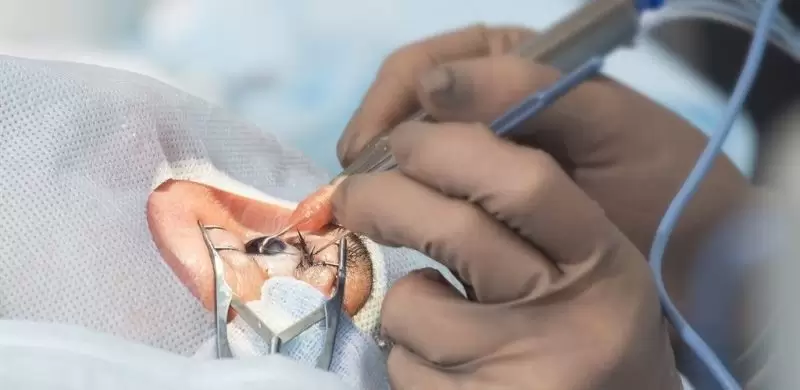Nowadays, laser eye surgery techniques, namely LASIK (Laser-assisted in Situ Keratomileusis), LASEK (Laser Epithelial Keratomileusis) and PRK (Photorefractive keratectomy) are the most popular ones with excellent patient safety records and significant success rates already published in the literature. Not everybody is eligible for laser eye surgery due to following reasons: too thin or irregularly shaped corneas, elevated refractive error, unstable vision problems, dry eyes, under age of 18, pregnancy, degenerative disorders, and previous laser eye surgery complications.
Complications are rare if surgeries are performed by well experienced and skilled surgeons. Halos and glares during night driving, dry eye episodes, hazy vision, and reduced sharpness of vision are reported. However, these complications are temporary visual disturbances and discomforts. They usually disappear within 3-6 months. Other complications are flap complication (it may be lifted during the surgery, but it is replaced using natural bandage), dry eyes (it is temporary and corrected by eye drops) and remarkable under-correction, overcorrection or regression problems (some are temporary and for the others it may still be necessary to use glasses or contact lenses).
LASIK is the most popular refractive surgical procedure applied on the eye for correcting common visual problems such as nearsightedness, farsightedness, astigmatism and presbyopia. This procedure aims to make the patient’s vision clearer and sharper, and to reduce the patient’s dependence on prescription eye glasses and/or contact lenses. With this procedure, an ultra-thin protective flap is created on the front surface of the eye using microkeratome blade or femtosecond laser by the surgeon. After the first laser beam, a second laser beam is applied for reshaping cornea’s imperfection. As a third step, the surgeon will fold back gently the protective ultra-thin flap of the patient’s cornea. The recovery time for LASIK is fast and the patient immediately returns to his/her normal routine life. The healing may naturally take hours and days. The patient’s vision usually improves within 24 hours. After the treatment, the patient feels a slight pain or sore but it is easily relieved by medicines suggested by the surgeon. The patient should not rub the eye for at least one week.
i-LASIK is enhanced by iDesign. It is more secure and has more precise results compared to traditional LASIK technique as it is a blade free laser procedure. A femtosecond laser is used instead of microkeratome blade.
LASEK combines LASIK and PRK techniques and is preferred for the patients who are not suitable for LASIK surgery. It is actually very similar to PRK surgery. The differences between the two methods are not clear. LASEK avoid from flap creating and reattaching complications in the cornea. It also causes dry eye less frequently than LASIK. In LASEK surgery, the flap created is pretty thinner than in LASIK surgery. LASEK can also be enhanced by iDesign.
There are some disadvantages of LASEK surgery:
- It has longer visual recovery time than LASIK surgery, but similar to PRK eye surgery.
- It causes more pain and discomfort than LASIK surgery, but less pain than PRK surgery.
- Patients with LASEK surgery need to wear bandage contact lenses for the protection of the treated area, but this is not necessary for patients with LASIK surgery.
iDesign is an innovative system creating a highly-detailed 3D map of the eye and enhancing the treatment. This technology detects over 1,200 microscopic eye imperfections. Therefore, an iDesign map is unique for everyone like fingerprints. With this technology, the surgeon determines the treatment 25 times more accurately than a standard prescription for glasses and/or contact lenses.
PRK is a keratectomy method by using alcohol, which allows the surgeon to remove easily the corneal epithelium. Contrary to the traditional PRK method, transPRK (transepithelial PRK), also known as no touch or touch free laser surgery, corrects refractive errors by well controlled excimer laser based on no-touch procedure, which is the removal of the corneal epithelium and stroma in a single step.

